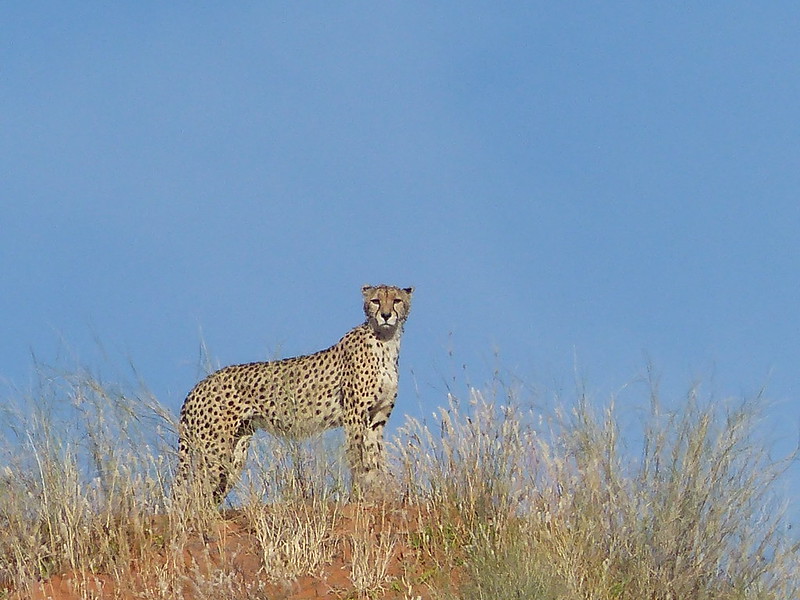Cheetahs not identified and posted yet:
Mel: Two cheetahs just north of Lijersdraai
viewtopic.php?p=349303#p349303
Michele Nel: Cheetah at Polentswa campsite
https://www.africawild-forum.com/viewto ... 56#p336156
Michele Nel: Cheetah just north of Polentswa
https://www.africawild-forum.com/viewto ... 52#p337552
GavinW: One cheetah on a dune
viewtopic.php?p=426447#p426447
ExFmem: Cheetah on dune near Kielie
viewtopic.php?p=475981#p475981
ExFmem: Cheetah on dune between Dalkeith and 14th
viewtopic.php?p=478551#p478551
Kgalagadi Cheetah Discussion
- Mel
- Global Moderator
- Posts: 27438
- Joined: Sat May 19, 2012 12:31 pm
- Country: Germany
- Location: Föhr
- Contact:
Kgalagadi Cheetah Discussion
God put me on earth to accomplish a certain amount of things. Right now I'm so far behind that I'll never die.
Infographic on Cheetahs
Nice infographic for the Cheetaholics here......
http://animagraffs.com/cheetah-natures-speed-machine/
http://animagraffs.com/cheetah-natures-speed-machine/
Dewi
What is the good of having a nice house without a decent planet to put it on? (H D Thoreau)
What is the good of having a nice house without a decent planet to put it on? (H D Thoreau)
- Mel
- Global Moderator
- Posts: 27438
- Joined: Sat May 19, 2012 12:31 pm
- Country: Germany
- Location: Föhr
- Contact:
Article on the Mills Cheetah Research Project
For those interested 
Here is a link to a scientific article about the Cheetah Research Project by the Mills:
http://onlinelibrary.wiley.com/enhanced ... gDone=true
Here is a link to a scientific article about the Cheetah Research Project by the Mills:
http://onlinelibrary.wiley.com/enhanced ... gDone=true
God put me on earth to accomplish a certain amount of things. Right now I'm so far behind that I'll never die.
- Lisbeth
- Site Admin
- Posts: 66709
- Joined: Sat May 19, 2012 12:31 pm
- Country: Switzerland
- Location: Lugano
- Contact:
Article on Cheetahs
I am posting this article hear, as I think that it will be read by the members who are seriously interested, instead of under Mammals/Cheetah.
Energetics gives new insight into the decline of cheetahs
By Louise de Bruin
Posted on 17 November 2014
An acclaimed international study looking into new reasons behind the dwindling numbers of cheetah in southern Africa had its inception at the University of Pretoria. Before this study, it was commonly thought that cheetah numbers were declining partly as a result of larger predators stealing their prey, thus lessening the availability of food and forcing them to expend more energy in search of food. However, a recent study offers new insight into why cheetahs may become vulnerable with regard to their energy levels, which could affect their general health and well-being and result in their ultimate decline.
The conceptual ideas for this study developed several years ago when Dr Michael Scantlebury, then a postdoctoral fellow, was studying mole rats in collaboration with Prof Nigel Bennett, holder of the Austin Roberts Chair of Mammalogy. From their innovative research using doubly labelled water (DLW) to determine daily energy expenditure (DEE) on caste differentiation in mole rats, which was incidentally published in Nature, they thought it a good idea to extend the study to a more enigmatic species like the cheetah to generate greater exposure for their ground-breaking findings.
The DLW method is a technique in terms of which so-called ‘heavy’ water is injected into an animal to evaluate its water loss through urination, defecation and perspiration in order to determine the amount of energy expended. During such activities, animals also produce carbon dioxide (CO₂). By analysing the production of CO₂, energy expenditure can be determined. Scantlebury found that even if 25% of a cheetah’s food is lost through kleptoparasitism (food stolen by larger predators), the effects are not devastatingly detrimental, as assumed previously. What proves to have a far greater negative effect on the well-being of cheetahs is the distance they have to walk in search of food.
The study, which evolved into an international collaboration, studied the energetics of 19 free-roaming cheetahs (fourteen in the Kgalagadi Transfrontier Park, and five in the Karongwe Private Reserve near Hoedspruit). The results showed that, contrary to common wisdom, the energy output during a high-speed cheetah chase after prey is not excessive. Rather, it seems that the energy they use to locate food far outweighs that used during a chase. The authors of the paper suggest that human activity, rather than competition with larger carnivores, is the predominant reason for the decline of cheetahs. Cheetahs have a nomadic lifestyle with a vast range. Consequently the number of fences erected on farms and placed around reserves is imposes a tremendous restriction on their hunting opportunities, with a ripple effect on their energy budgets. Bennett says, ’Cheetahs, like all carnivores, tread an energetic tightrope and low energy has several negative consequences, which may affect the immune system, reproductive abilities and metabolism.’
An international study of this kind has many benefits, Bennett notes. Broad collaboration implies that more resources can be invested in the study, and input of experts from multidisciplinary fields can be obtained. A previous graduate and extraordinary professor at UP, Dr Gus Mills, and his wife Margie were instrumental in the fieldwork for this study done in the Kalahari. They were involved in a six-year intensive study of Kalahari cheetahs, and so the energy research was piggy-backed on their work. They could follow Kalahari cheetahs and collect important faecal samples, and also provide invaluable background data that was used to interpret the results of the energetics study.
According to Bennett, there is great promise in furthering the study and adapting the findings. Because this initial study was done in the extreme weather setting of the Kalahari, Bennett mentioned the value of monitoring cheetahs in other areas of their savannah habitat, such as parts of the Kruger National Park. It would also be interesting to look at areas with a higher density of prey. However, the importance of this study is not just that it has offered new insight into a species whose declining numbers have dwindled to less than 10 000. What this study also shows is the importance of tackling all angles of a situation. While man’s intention may have been good when designating and cordoning off areas for wildlife, the reality seems that when the environment is modified too drastically, adverse effects and unintended consequences often result.
http://web.up.ac.za/default.asp?ipkCate ... leID=22322
Energetics gives new insight into the decline of cheetahs
By Louise de Bruin
Posted on 17 November 2014
An acclaimed international study looking into new reasons behind the dwindling numbers of cheetah in southern Africa had its inception at the University of Pretoria. Before this study, it was commonly thought that cheetah numbers were declining partly as a result of larger predators stealing their prey, thus lessening the availability of food and forcing them to expend more energy in search of food. However, a recent study offers new insight into why cheetahs may become vulnerable with regard to their energy levels, which could affect their general health and well-being and result in their ultimate decline.
The conceptual ideas for this study developed several years ago when Dr Michael Scantlebury, then a postdoctoral fellow, was studying mole rats in collaboration with Prof Nigel Bennett, holder of the Austin Roberts Chair of Mammalogy. From their innovative research using doubly labelled water (DLW) to determine daily energy expenditure (DEE) on caste differentiation in mole rats, which was incidentally published in Nature, they thought it a good idea to extend the study to a more enigmatic species like the cheetah to generate greater exposure for their ground-breaking findings.
The DLW method is a technique in terms of which so-called ‘heavy’ water is injected into an animal to evaluate its water loss through urination, defecation and perspiration in order to determine the amount of energy expended. During such activities, animals also produce carbon dioxide (CO₂). By analysing the production of CO₂, energy expenditure can be determined. Scantlebury found that even if 25% of a cheetah’s food is lost through kleptoparasitism (food stolen by larger predators), the effects are not devastatingly detrimental, as assumed previously. What proves to have a far greater negative effect on the well-being of cheetahs is the distance they have to walk in search of food.
The study, which evolved into an international collaboration, studied the energetics of 19 free-roaming cheetahs (fourteen in the Kgalagadi Transfrontier Park, and five in the Karongwe Private Reserve near Hoedspruit). The results showed that, contrary to common wisdom, the energy output during a high-speed cheetah chase after prey is not excessive. Rather, it seems that the energy they use to locate food far outweighs that used during a chase. The authors of the paper suggest that human activity, rather than competition with larger carnivores, is the predominant reason for the decline of cheetahs. Cheetahs have a nomadic lifestyle with a vast range. Consequently the number of fences erected on farms and placed around reserves is imposes a tremendous restriction on their hunting opportunities, with a ripple effect on their energy budgets. Bennett says, ’Cheetahs, like all carnivores, tread an energetic tightrope and low energy has several negative consequences, which may affect the immune system, reproductive abilities and metabolism.’
An international study of this kind has many benefits, Bennett notes. Broad collaboration implies that more resources can be invested in the study, and input of experts from multidisciplinary fields can be obtained. A previous graduate and extraordinary professor at UP, Dr Gus Mills, and his wife Margie were instrumental in the fieldwork for this study done in the Kalahari. They were involved in a six-year intensive study of Kalahari cheetahs, and so the energy research was piggy-backed on their work. They could follow Kalahari cheetahs and collect important faecal samples, and also provide invaluable background data that was used to interpret the results of the energetics study.
According to Bennett, there is great promise in furthering the study and adapting the findings. Because this initial study was done in the extreme weather setting of the Kalahari, Bennett mentioned the value of monitoring cheetahs in other areas of their savannah habitat, such as parts of the Kruger National Park. It would also be interesting to look at areas with a higher density of prey. However, the importance of this study is not just that it has offered new insight into a species whose declining numbers have dwindled to less than 10 000. What this study also shows is the importance of tackling all angles of a situation. While man’s intention may have been good when designating and cordoning off areas for wildlife, the reality seems that when the environment is modified too drastically, adverse effects and unintended consequences often result.
http://web.up.ac.za/default.asp?ipkCate ... leID=22322
"Education is the most powerful weapon which you can use to change the world." Nelson Mandela
The desire for equality must never exceed the demands of knowledge
The desire for equality must never exceed the demands of knowledge
- Mel
- Global Moderator
- Posts: 27438
- Joined: Sat May 19, 2012 12:31 pm
- Country: Germany
- Location: Föhr
- Contact:
Hanri: Walking Distance
Something else:
When staying at Urikaruus I searched for Hanri up and down the Northern Auob. No such luck. By now I know why:
Early March she was seen at Kamqua, by the 4th April she had made it down to Samevloeiing and the last report from April is between Leeuwdril and Rooiputs.
That lady walks her offspring quite a bit!
When staying at Urikaruus I searched for Hanri up and down the Northern Auob. No such luck. By now I know why:
Early March she was seen at Kamqua, by the 4th April she had made it down to Samevloeiing and the last report from April is between Leeuwdril and Rooiputs.
That lady walks her offspring quite a bit!
God put me on earth to accomplish a certain amount of things. Right now I'm so far behind that I'll never die.
- AstroMatt
- Posts: 154
- Joined: Wed Sep 11, 2013 9:11 am
- Country: South Africa
- Location: Cape Town
- Contact:
Hanri: Walking Distance
Wow!! So many great sightings...and so many cubs. Looks like you had an amazing trip Mel. 

Sad to see that Bedi has lost one of her cubs, but it is a hard world out there.
As for all the long walks i suspect that it has many reasons. The cubs need to get fit before they strike it alone, so it might well be that they go on long walks to help improve their stamina and build up muscles. Searching for food is also a big factor and also introducing them to new territory is very important. There could also be other factors like other predators in the area. In short i guess it is a combination of all of these things...oh and for fun of course
Sad to see that Bedi has lost one of her cubs, but it is a hard world out there.
As for all the long walks i suspect that it has many reasons. The cubs need to get fit before they strike it alone, so it might well be that they go on long walks to help improve their stamina and build up muscles. Searching for food is also a big factor and also introducing them to new territory is very important. There could also be other factors like other predators in the area. In short i guess it is a combination of all of these things...oh and for fun of course
Kgalagadi Leopard Identification Guide
http://www.ast.uct.ac.za/~schurch/leopards/
Please use the report form or download the spreadsheet to report leopard sightings to me.
http://www.ast.uct.ac.za/~schurch/leopards/
Please use the report form or download the spreadsheet to report leopard sightings to me.
-
Michele Nel
- Posts: 1994
- Joined: Mon Sep 10, 2012 10:19 am
- Country: South Africa
- Location: Cape Town
- Contact:
Unidentified Cheetah at Polentswa
here we go..this one is bad...really bad....I couldn't really see the cheetah with the naked eye.Mel wrote:No probs about the post
Try me anyway with the Polentswa cheetah. Highest pic width the forum allows you, please
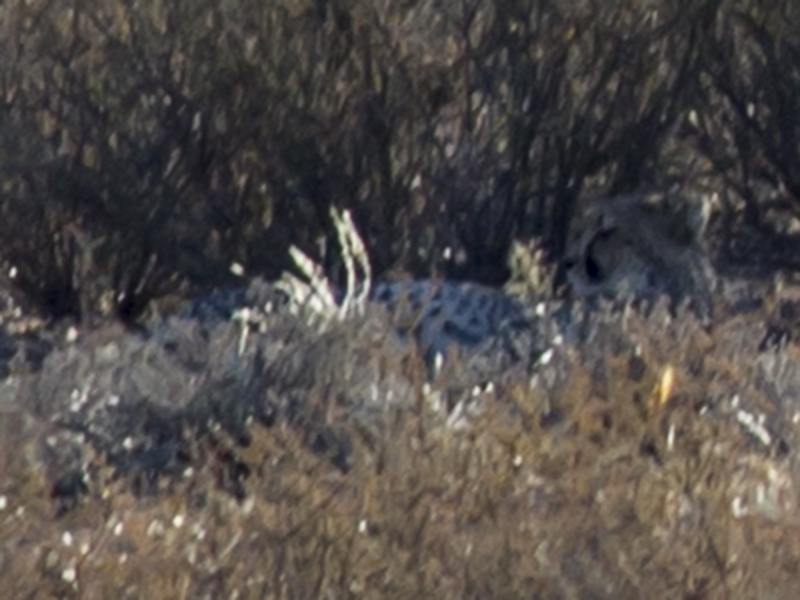
-
Michele Nel
- Posts: 1994
- Joined: Mon Sep 10, 2012 10:19 am
- Country: South Africa
- Location: Cape Town
- Contact:
Unidentified Cheetah North of Polentswa
so here is another cheetah that needs a name. It was a very brief sighting..hence the out of focus photo.
Seen on 04/01/2016..not too much north of Polentswa
Seen on 04/01/2016..not too much north of Polentswa
- Mel
- Global Moderator
- Posts: 27438
- Joined: Sat May 19, 2012 12:31 pm
- Country: Germany
- Location: Föhr
- Contact:
Unidentified Cheetah North of Lijersdraai
So, I will copie my mystery Huffle & Puffle cheetah to here. Hopefully I should get some better photos over the weekends from other guests who saw them earlier than us when they were still in the road. Might help the ID process.
Number 1
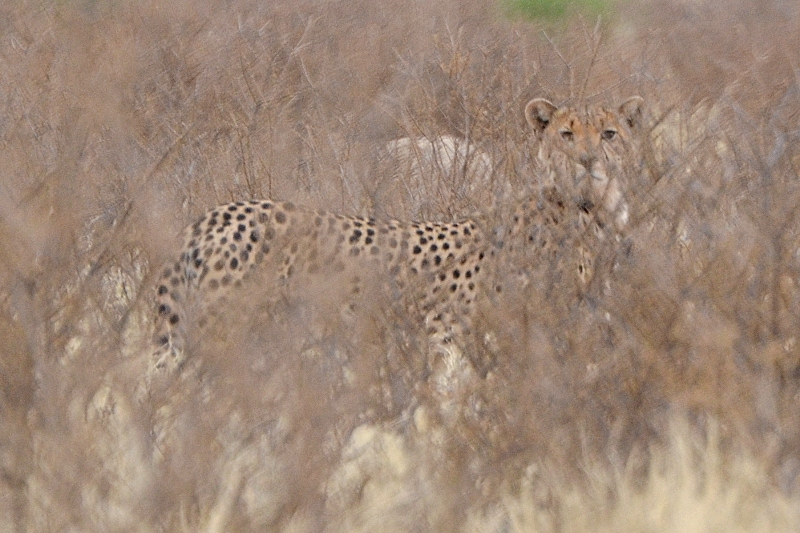
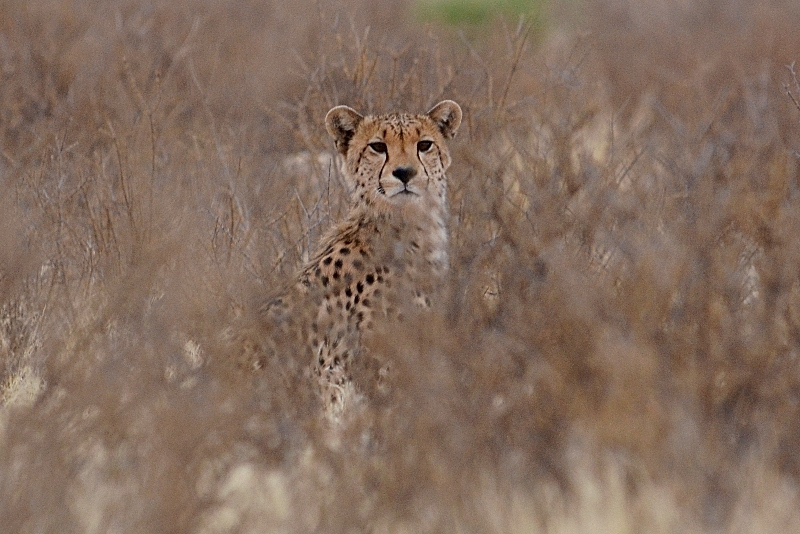
Number 2 (Number 1 hidden behind Number 2)
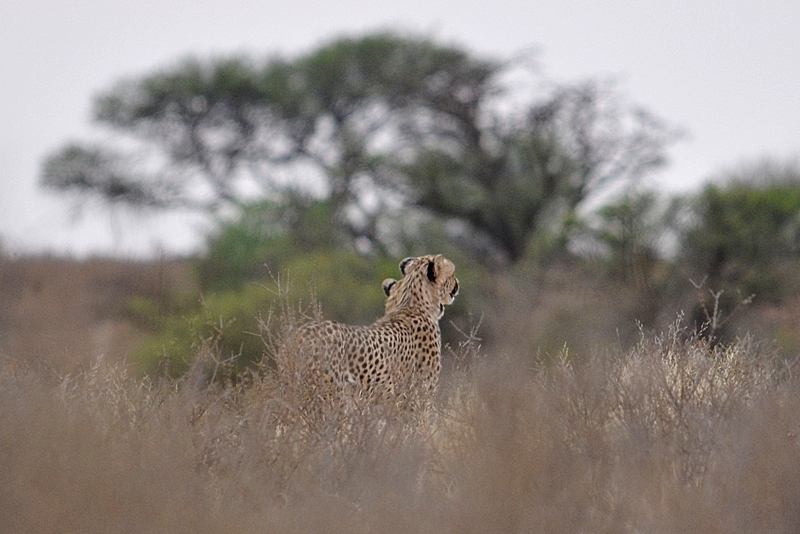
Number 1 (Number 2 is leaving to the right)

Number 1


Number 2 (Number 1 hidden behind Number 2)

Number 1 (Number 2 is leaving to the right)

God put me on earth to accomplish a certain amount of things. Right now I'm so far behind that I'll never die.
- Mel
- Global Moderator
- Posts: 27438
- Joined: Sat May 19, 2012 12:31 pm
- Country: Germany
- Location: Föhr
- Contact:
Re: Kgalagadi Cheetah Discussion
God put me on earth to accomplish a certain amount of things. Right now I'm so far behind that I'll never die.



